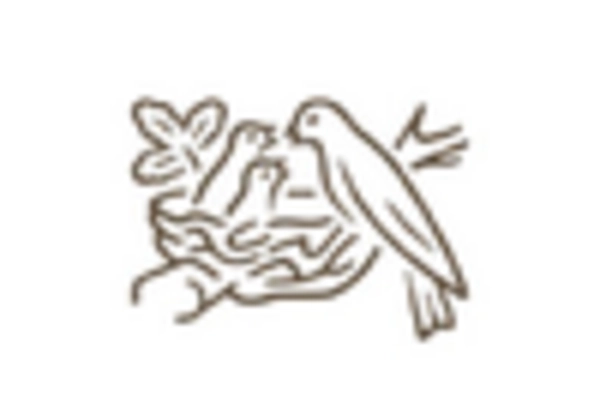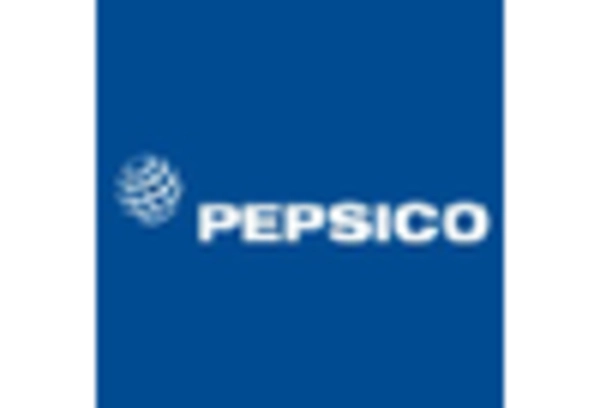The water bottle market exhibits a dynamic competitive landscape characterized by a blend of established brands and emerging players. Key growth drivers include increasing health consciousness among consumers, a shift towards sustainable packaging, and the rising demand for reusable bottles. Major companies such as Coca-Cola (US), PepsiCo (US), and Hydro Flask (US) are strategically positioned to leverage these trends. Coca-Cola (US) focuses on expanding its product line with innovative designs and eco-friendly materials, while PepsiCo (US) emphasizes partnerships with local brands to enhance its market reach. Hydro Flask (US), known for its premium insulated bottles, continues to innovate with new colorways and limited editions, thereby appealing to a younger demographic. Collectively, these strategies foster a competitive environment that prioritizes sustainability and consumer engagement.
Key business tactics within the market include localizing manufacturing to reduce costs and optimize supply chains. The competitive structure appears moderately fragmented, with several key players holding substantial market shares. This fragmentation allows for niche brands to thrive, while larger companies leverage economies of scale. The collective influence of these key players shapes market dynamics, as they compete not only on product quality but also on brand loyalty and sustainability initiatives.
In October 2025, Coca-Cola (US) announced a partnership with a leading sustainable materials company to develop a new line of biodegradable water bottles. This strategic move underscores Coca-Cola's commitment to sustainability and positions the company to capture a growing segment of environmentally conscious consumers. The introduction of biodegradable options may enhance brand loyalty and attract new customers who prioritize eco-friendly products.
In September 2025, PepsiCo (US) launched a campaign aimed at promoting its new line of reusable water bottles, which feature advanced filtration technology. This initiative not only aligns with the increasing consumer demand for health-oriented products but also reinforces PepsiCo's commitment to reducing plastic waste. The campaign's focus on health and sustainability is likely to resonate with consumers, potentially increasing market share in the competitive landscape.
In August 2025, Hydro Flask (US) unveiled a limited-edition collection in collaboration with a popular outdoor brand. This strategic partnership aims to tap into the outdoor enthusiast market, which is increasingly seeking high-quality, durable products. By aligning with a brand that shares similar values, Hydro Flask (US) enhances its visibility and appeal among target consumers, potentially driving sales and brand loyalty.
As of November 2025, current competitive trends in the water bottle market include a pronounced emphasis on digitalization, sustainability, and the integration of AI technologies. Strategic alliances are increasingly shaping the landscape, as companies collaborate to enhance product offerings and market reach. Looking ahead, competitive differentiation is likely to evolve, shifting from price-based competition to a focus on innovation, technology, and supply chain reliability. Companies that prioritize these aspects may gain a competitive edge in an increasingly crowded market.

















Leave a Comment